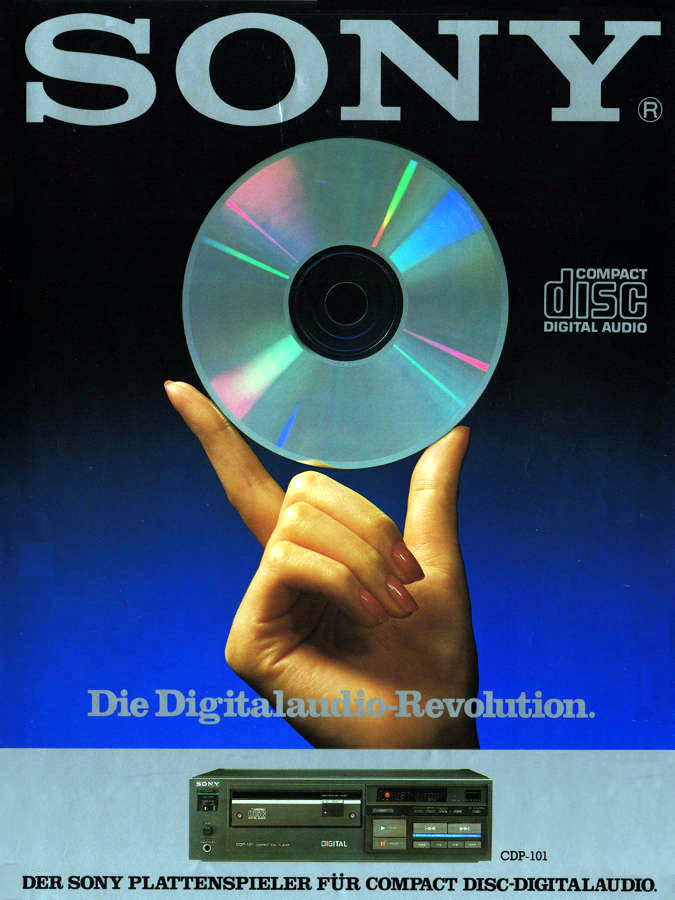Hi-Fi Hall of Fame
Technology Inductee
Compact Disc (CD)
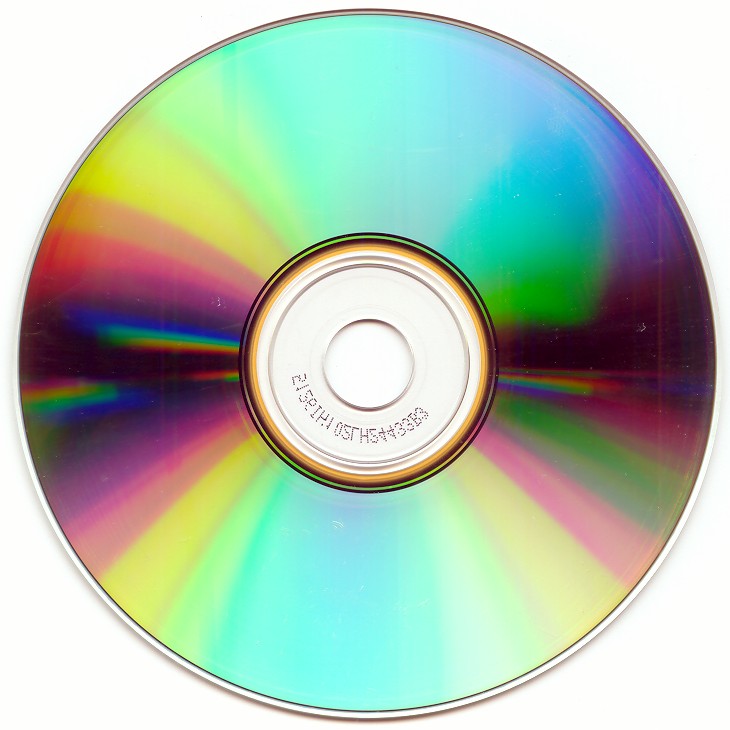
Introduction
Our next inductee in the Technology category is the Compact Disc, often simply called the “CD”.
The CD is a digital optical disc initially developed for storing and playing back audio recordings. This thin, circular polycarbonate plastic disc encodes digital data as a series of microscopic “pits” and “lands” on its surface. A laser beam within a CD player reflects off these surfaces; the changes in reflection are interpreted as binary data.
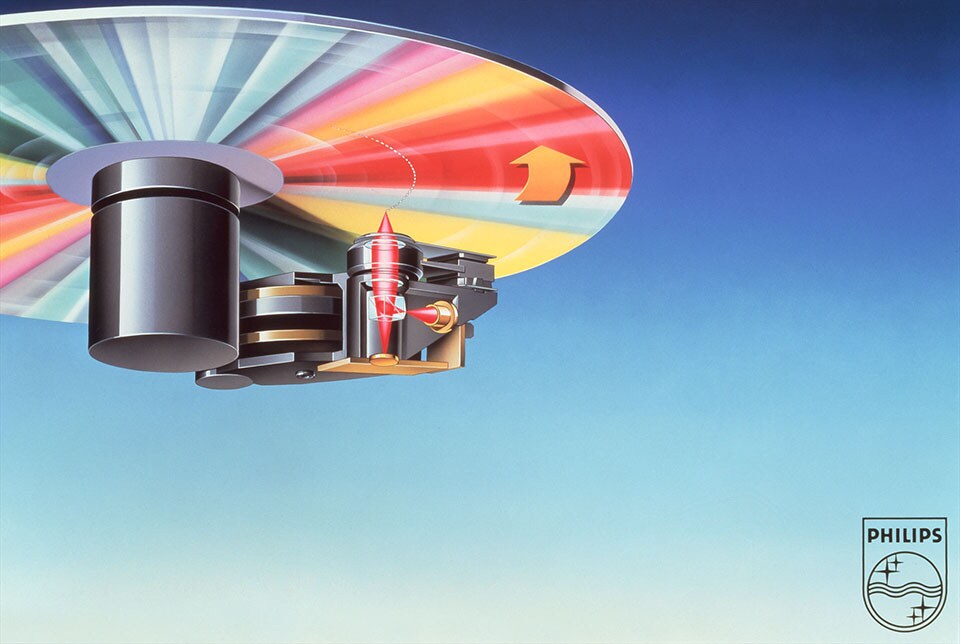
Launched in the early 1980s, CDs quickly gained popularity due to their superior sound quality, durability, and larger storage capacity compared to vinyl records and cassette tapes. Beyond audio, CDs became a standard medium for distributing software, computer files, and other digital information.
Let’s take a look at this popular technology to see why it belongs in the Hi-Fi Hall of Fame.
Development of Compact Disc Technology
In the 1970s, all music was produced and delivered to the consumer using analog technologies. People could listen to music on vinyl Long Playing (LP) records, cassette tapes, 8-track tapes, open reel tapes, or even FM radio, but all of these were analog. While analog technologies from this era were very good, they still suffered from anomalies such as noise and distortion, and physical media such as records and tapes were fragile and subject to wear and tear.
To solve these problems, engineers developed digital technologies that would provide an alternative to these analog formats.
The first highly successful digital media for music was the Compact Disc (CD), which was jointly developed by Sony and Philips. It was a collaborative effort between the two companies, resulting in the creation of a standardized digital optical disc storage format. This new standard was called the “Red Book”.
First CD Players and Discs
Philips Pinkeltje
By 1979, Philips had a prototype CD player named “Pinkeltje” (Dutch for “fingerling”), named after a well known friendly gnome from a Dutch children’s story. It didn’t quite comply to the Red Book standard but it certainly was a “proof of concept” that the CD format was going to be a great new format for audio.
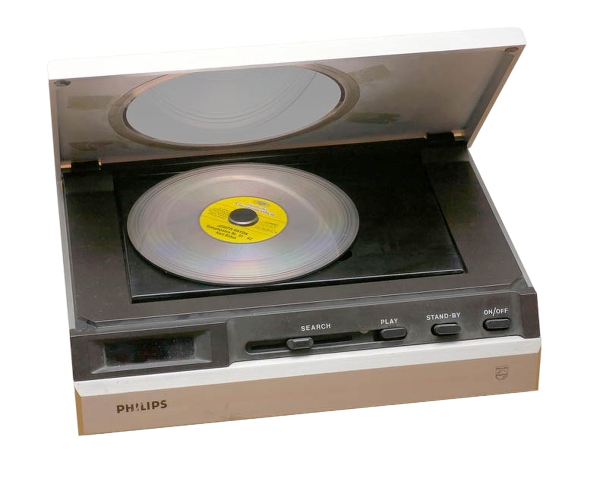
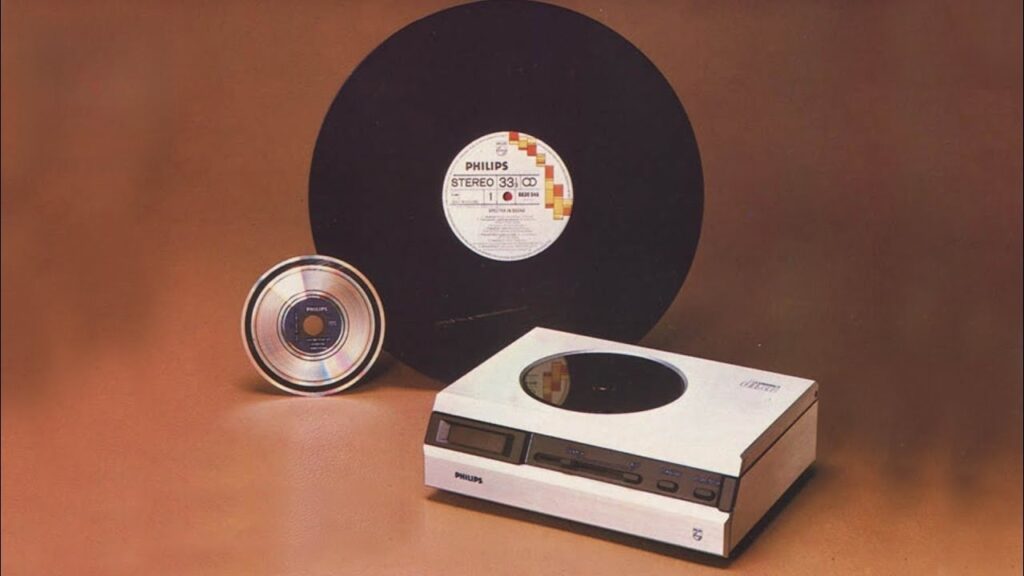
Sony Goronta
By 1981, Sony had a prototype CD player called “Goronta” which they showed at a 1981 Audio Fair. The name Goronta was derived from a Japanese word “goron”, meaning bulky and awkward. Here is a photo of the Goronta, which was a front loading CD player with many of the controls and features that would become standard on many CD players.
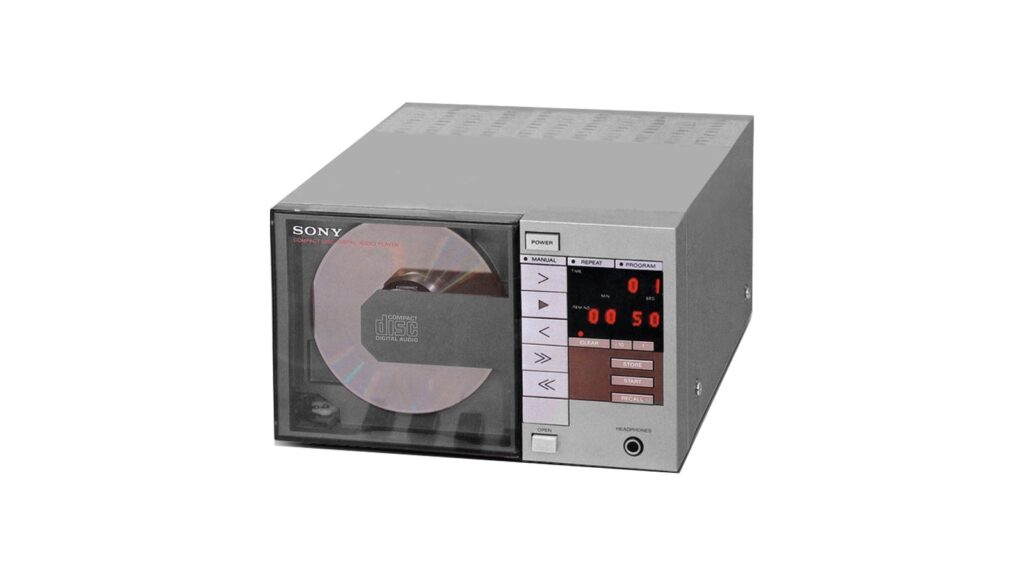
Sony CDP-101 CD Player
Sony produced the world’s first commercial CD player, the CDP-101. It was a groundbreaking device that marked the beginning of the digital audio era. Released in 1982, it set a new standard for high quality audio playback.
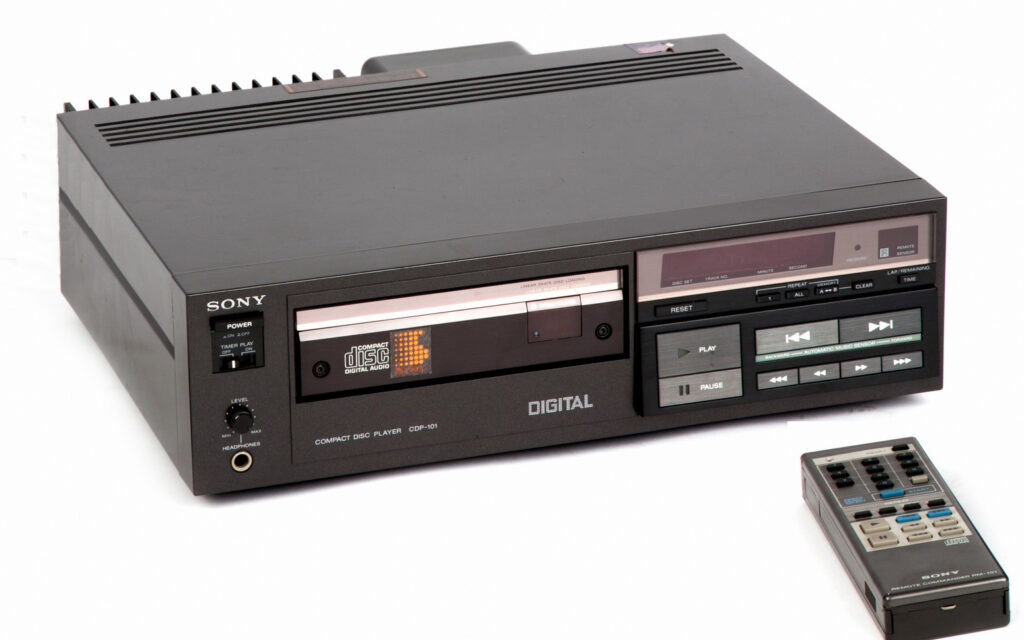
The Sony CDP-101 was launched in Japan on October 1, 1982 at a list price of 168,000 yen, equivalent to about US$ 730. It was launched worldwide in March 1983.
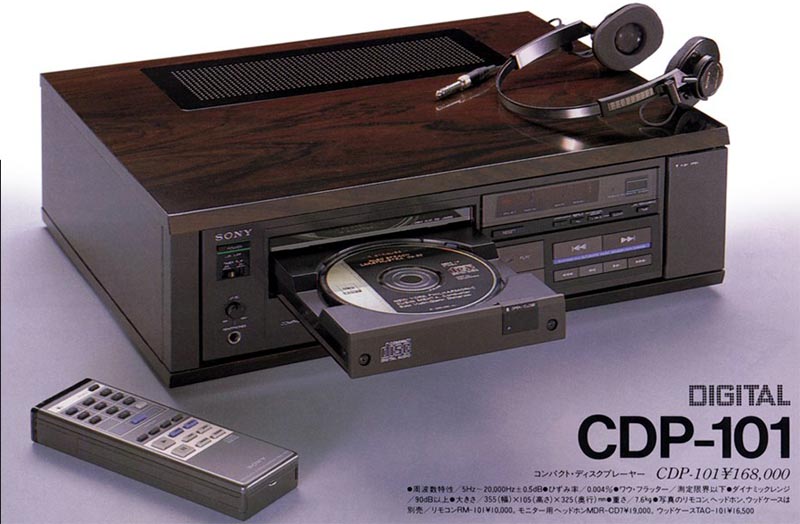
The impact of the Sony CDP-101 was significant, as it introduced a new digital audio technology that offered superior sound quality, durability and convenience compared to vinyl records and cassette tapes. The CDP-101 also set the standard for CD player design, featuring a horizontal tray-loading system, a vacuum fluorescent display panel, an infrared remote control, and a 16-bit Digital-to-Analog Converter (DAC) that was designed and manufactured in house by Sony.
The CDP-101 was designed by Sony engineer Toshitada Doi, who was tasked with developing a digital audio system that could reproduce high-quality sound from compact discs. The Sony CDP-101 was a milestone in the history of audio engineering and consumer electronics, and paved the way for the widespread adoption of CDs as the dominant music format in the late 1980s and 1990s. It also inspired many other manufacturers to produce their own CD players, creating a competitive and innovative market for digital audio products. The CDP-101 is now considered a classic and collectible item among vintage audio enthusiasts.

The CDP-101 was inducted into the Hi-Fi Hall of Fame in August 2023. Click here to see our profile of this “world’s first” CD player.
Philips CD100 / Magnavox FD1000
As the co-inventor of the CD format, Philips was also one of the first manufacturers to offer a commercial CD player. The Philips CD100 and Magnavox FD1000 are essentially the same machine, released in late 1982 and early 1983. The Philips version was aimed at the global market, and the Magnavox version was a North American “rebadge” under the Philips-owned Magnavox brand.
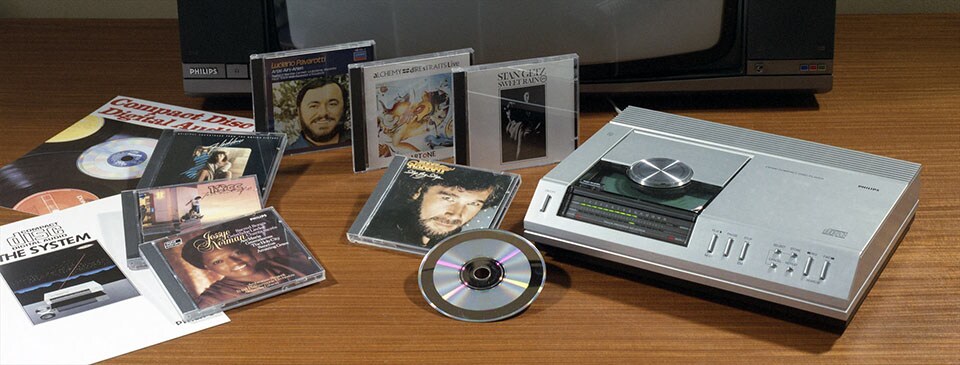
These top-loading players were revolutionary, introducing what Philips called “pure, perfect sound” via digital audio. They featured Philips’ robust swing-arm CDM-0/CDM-1 transport mechanism and 14-bit DACs with 4x oversampling, a clever design choice that many audiophiles still praise for its smooth, non-fatiguing sound. While lacking modern features like remote control or time displays, their iconic design with LED track indicators and impressive build quality made them instant classics and highly sought-after collector’s items.
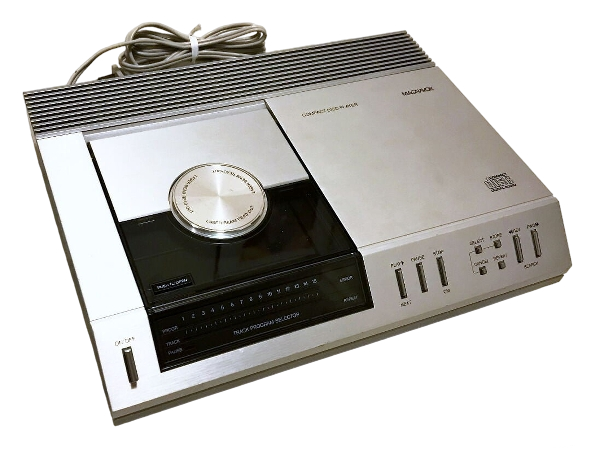
The First CD: Billy Joel’s “52nd Street”
The first CDs were released in 1982 in Japan, to coincide with the release of the Sony CDP-101. The very first title to be released was Billy Joel’s “52nd Street”, produced by the CBS/Sony label. There were about 50 titles released in 1982, including a wide range of classical and popular music.
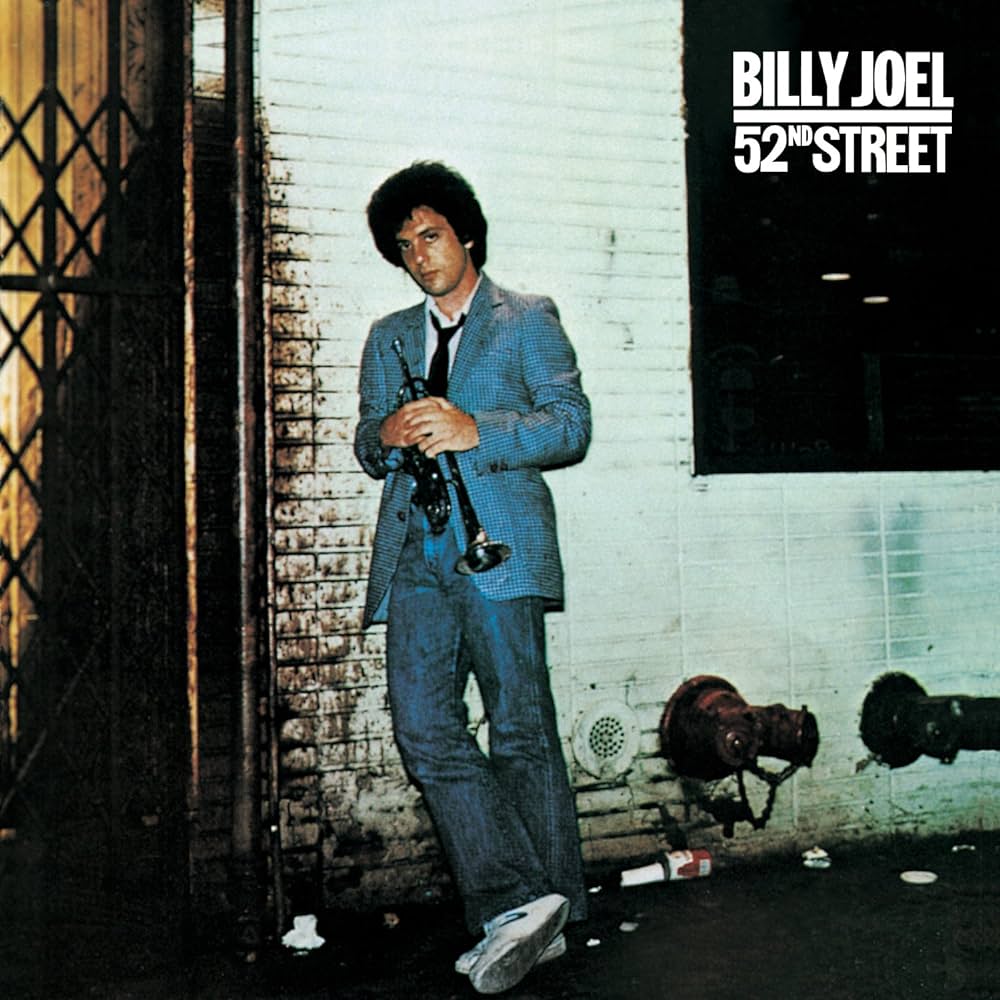
Sony D-50 Portable CD Player
In November 1984, the second anniversary of the CD, Sony launched the world’s first portable CD player, the D-50. It caused a great sensation in the audio world. Retailing at only 49,800 yen, the D-50 was the size of a CD case and it offered similar functions to the CDP-101, but came without a remote control and repeat functions.
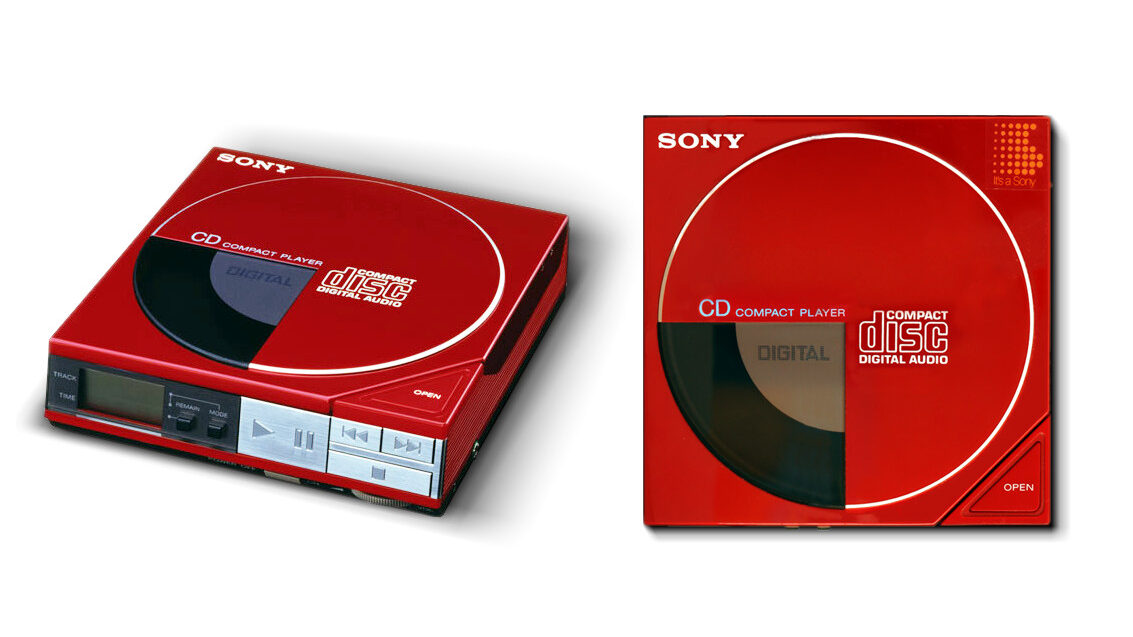
The popularity of the D-50 really drove the popularity of the Compact Disc format. The number of CD titles grew, and the CD industry experienced tremendous growth. Sony’s line of portable CD players, which enjoyed widespread popularity following the success of the D-50, was nicknamed “Discman” since these portable players allowed the user to enjoy music while on the move similar to the Walkman.
Compact Disc Advantages over Analog Technologies
Compact Discs had many advantages compared to analog music technologies such as vinyl records, magnetic tape, and FM radio. Here are the key advantages that made the CD so successful.
Sound Quality
CDs offer superior sound quality compared to analog formats. CDs use digital audio encoding, which eliminates the inherent noise, crackle, and pops associated with analog recordings. The digital nature of CDs also reduces the degradation of sound over time, ensuring consistent quality with each playback.
Durability
CDs are more durable than analog formats. Vinyl records are susceptible to scratches, warping, and wear, while cassette tapes can become tangled or suffer from deteriorating tape quality. CDs are relatively immune to physical damage, and as long as they are handled and stored properly, they can last for decades without significant degradation.
Compact Size
CDs are smaller and more compact than vinyl records and cassette tapes. This makes them easier to store, transport, and handle. CDs’ compact size also allowed for the development of portable CD players, which contributed to the rise of personal music on the go.
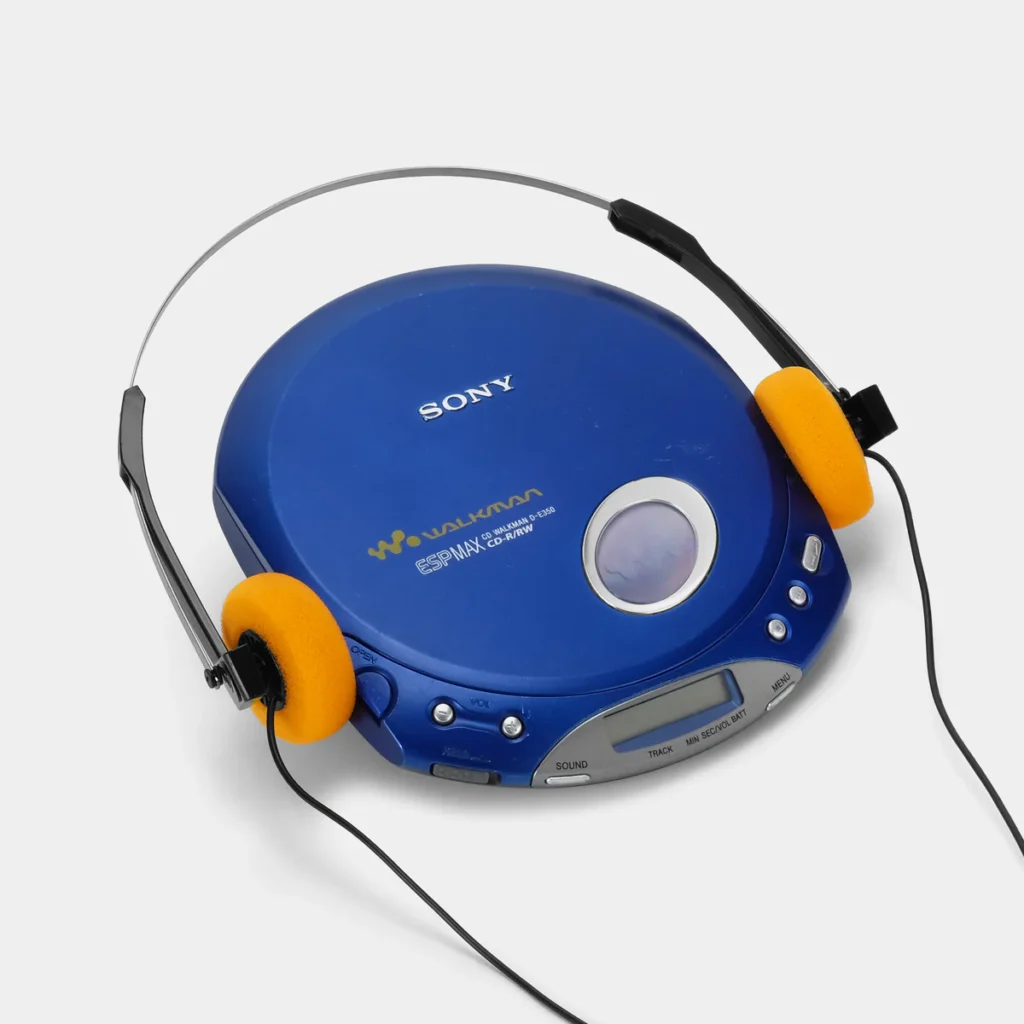
Search and Navigation
CDs introduced the concept of digital search and navigation, allowing users to directly access specific tracks using the player’s remote control or interface. This was a significant improvement over the sequential nature of analog formats.
Consistency
CDs ensure consistent sound quality across copies. Analog recordings can experience variations in sound quality due to the limitations of the recording and playback equipment, whereas CDs reproduce the exact digital audio data, leading to consistent sound quality.
Resistance to Environmental Factors
CDs are less affected by environmental factors such as temperature and humidity compared to analog formats. Vinyl records can warp in heat, and cassette tapes may suffer from tape deterioration under unfavorable conditions.

Digital Copying
CDs paved the way for easy and accurate digital copying and replication. This allowed for efficient production of identical copies without generational loss, which was more challenging with analog formats.
Longevity
CDs are known for their relatively stable and long-lasting data retention. Properly stored CDs can retain their data integrity for many years, contributing to their archival value.
Compact Disc Evolution
With the great technical and commercial success of conventional CDs, manufacturers began to develop alternate forms of CDs. The most popular of these were the CD-R, CD-RW, and SACD.
Recordable CD (CD-R)
The original CD was pre-recorded at the factory, and was only capable of playing music. People wanted a CD that they could record themselves, so engineers developed a recordable version of the Compact Disc, commonly known as a CD-R.
Developed by Philips and Sony and first released in 1988, a CD-R could typically hold up to 700 megabytes (MB) of data or 80 minutes of audio. They are constructed with a polycarbonate substrate, a photosensitive organic dye layer, and a reflective layer, often gold or silver. When data is written, a powerful laser in a CD burner heats the dye, creating permanent, non-reflective spots (“pits”) and leaving reflective areas (“lands”). These changes in reflectivity represent the binary data that a standard CD player can read.
CD-Rs were popular for creating custom music CDs, backing up computer files, and distributing software. While largely superseded by higher-capacity and rewritable formats like DVDs, Blu-rays, and flash drives, they remain a usable medium for certain archival and niche applications due to their write-once nature, which ensures data integrity.
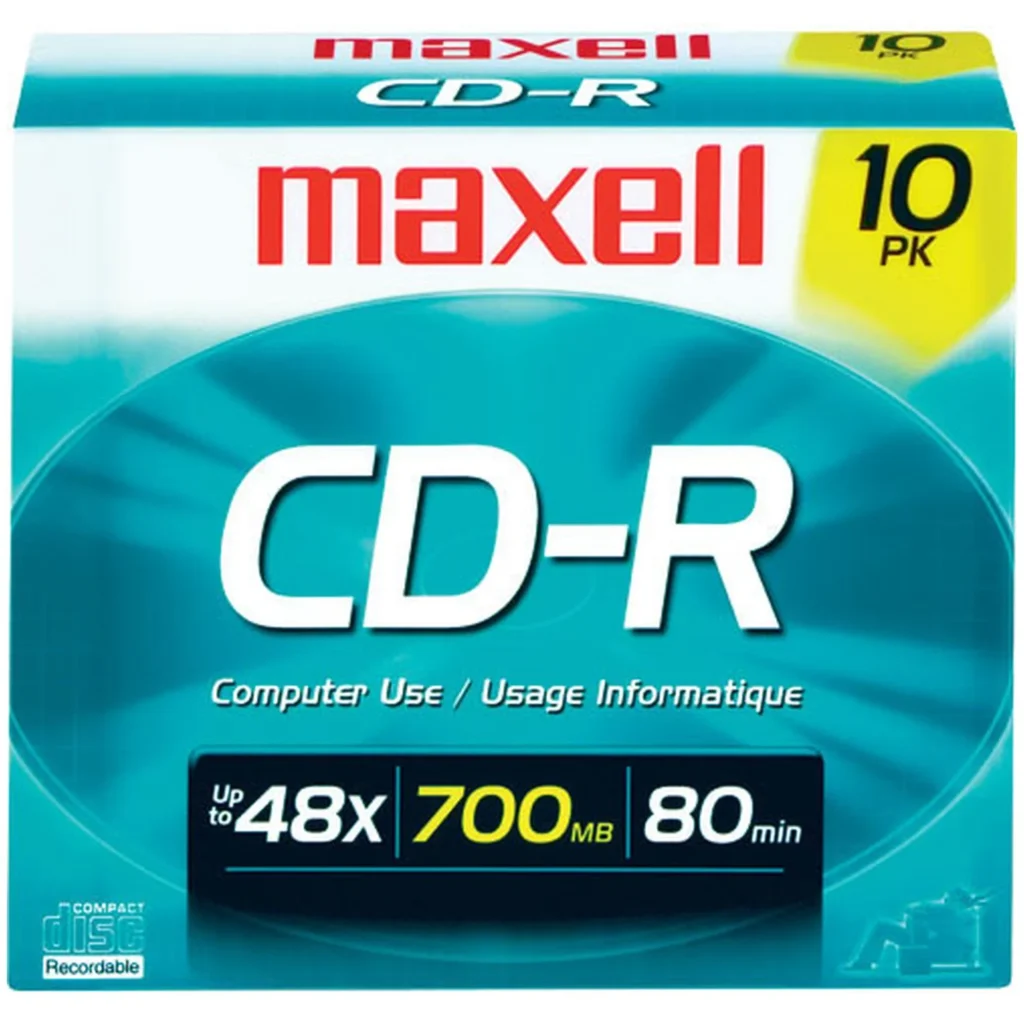

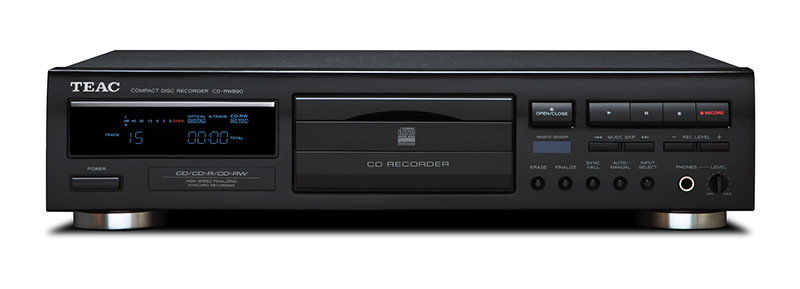
Compact Disc ReWritable (CD-RW)
By 1997 the industry had developed a rewritable version of the CD called the CD-RW. It is a type of optical disc that offers the significant advantage of being rewritable, unlike its “write once” counterpart, the CD-R. This means data can be written, erased, and rewritten multiple times – typically up to 1,000 times – providing flexibility for tasks like temporary data storage, backups, and creating editable multimedia compilations.
CD-RWs utilize a special phase-change alloy in their recording layer. A laser heats this material to different temperatures, causing it to switch between crystalline (reflective, erased state) and amorphous (less reflective, recorded state) phases. This “phase change” allows for the alteration of data.
While CD-RWs generally hold the same capacity as CD-Rs (around 700 MB or 80 minutes of audio), their reflectivity is lower, making them incompatible with older CD-ROM drives that lacked “MultiRead” capabilities. Despite the rise of flash drives and cloud storage, CD-RWs still find niche uses due to their cost-effectiveness and offline data security.
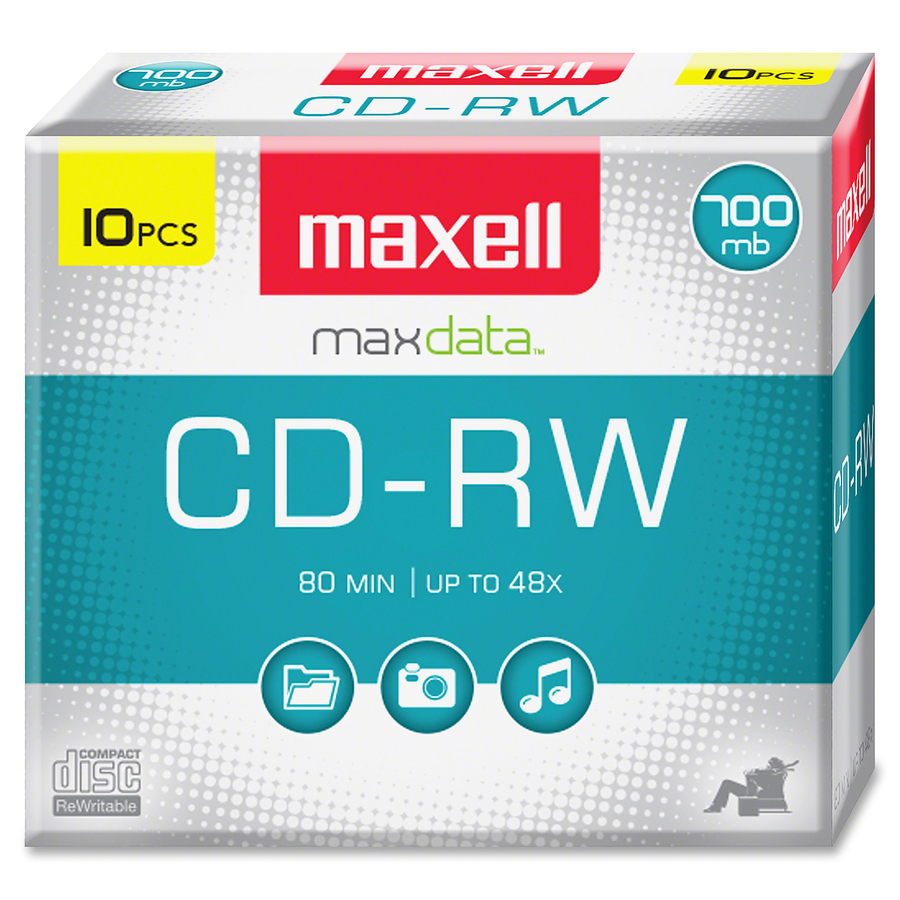
Super Audio CD (SACD)
The Super Audio CD (SACD) is a high-resolution audio disc format developed by Sony and Philips, aiming to provide higher audio quality compared to the standard Compact Disc. Introduced in 1999, SACD distinguishes itself by using Direct Stream Digital (DSD) encoding, which samples audio at a much higher rate (2.8224 MHz, 64 times that of a CD) and with a 1-bit resolution, as opposed to the CD’s Pulse-Code Modulation (PCM).
This technical difference allows SACD to offer a wider dynamic range (up to 120 dB) and an extended frequency response (up to 100 kHz, though often practically limited to 50 kHz), resulting in a more detailed, natural, and immersive sound experience, often described as more “analog-like.” Many SACD releases also support multi-channel (surround sound) audio.
While SACD gained a following among audiophiles, it faced a format war with DVD-Audio and ultimately didn’t achieve widespread mainstream adoption. A few companies continue to produce “hybrid” SACDs, which includes a standard CD layer and an SACD layer. These can be played on conventional CD players or special SACD players. Today, SACD remains a niche format, primarily favored by audiophile labels for classical and jazz recordings, with new releases still appearing regularly.
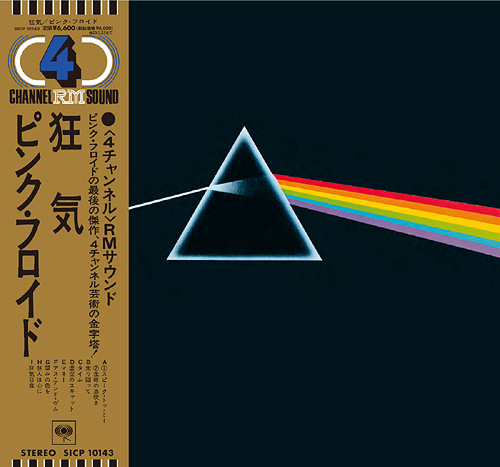

Compact Disc: Rise and Fall in Popularity
The Compact Disc (CD) revolutionized audio with its crisp, digital sound and durability, quickly gaining traction after its introduction in 1982. By the late 1980s, CDs began outselling vinyl LPs, and by the early 1990s, they surpassed cassette tapes, becoming the dominant audio format. The peak of CD popularity arrived around 2000, with robust sales and widespread adoption in homes and vehicles.
However, as with many things, new technologies eventually became available which ushered in the CD’s decline. The rise of MP3s, file-sharing platforms such as Napster, and eventually, portable music players like the iPod (launched in 2001) offered unparalleled convenience and portability. Consumers shifted away from physical media to digital downloads. Later, the explosion of music streaming services in the mid-2000s cemented the CD’s fall from grace. While a small market for CDs persists, particularly among collectors and audiophiles, their mass appeal has largely been eclipsed by the accessibility and vast libraries of streaming platforms.
The Compact Disc was the dominant Hi-Fi music media for music for almost 20 years, and music producers continue to make CDs of new music, so we expect the format is going to be around for a while.
CD Players Today
Although the CD is no longer the dominant Hi-Fi media for music, manufacturers continue to manufacture a wide range of CD players at all price points. And because the CD standard has never been changed in all these years, a new CD player will play discs from the 1980s just as well as it will play brand new CDs. Here’s a small sample of CD players that are available today.
Portable CD Players
One of the most popular types of CD player is the portable, self-contained player. They are inexpensive and easy to operate.
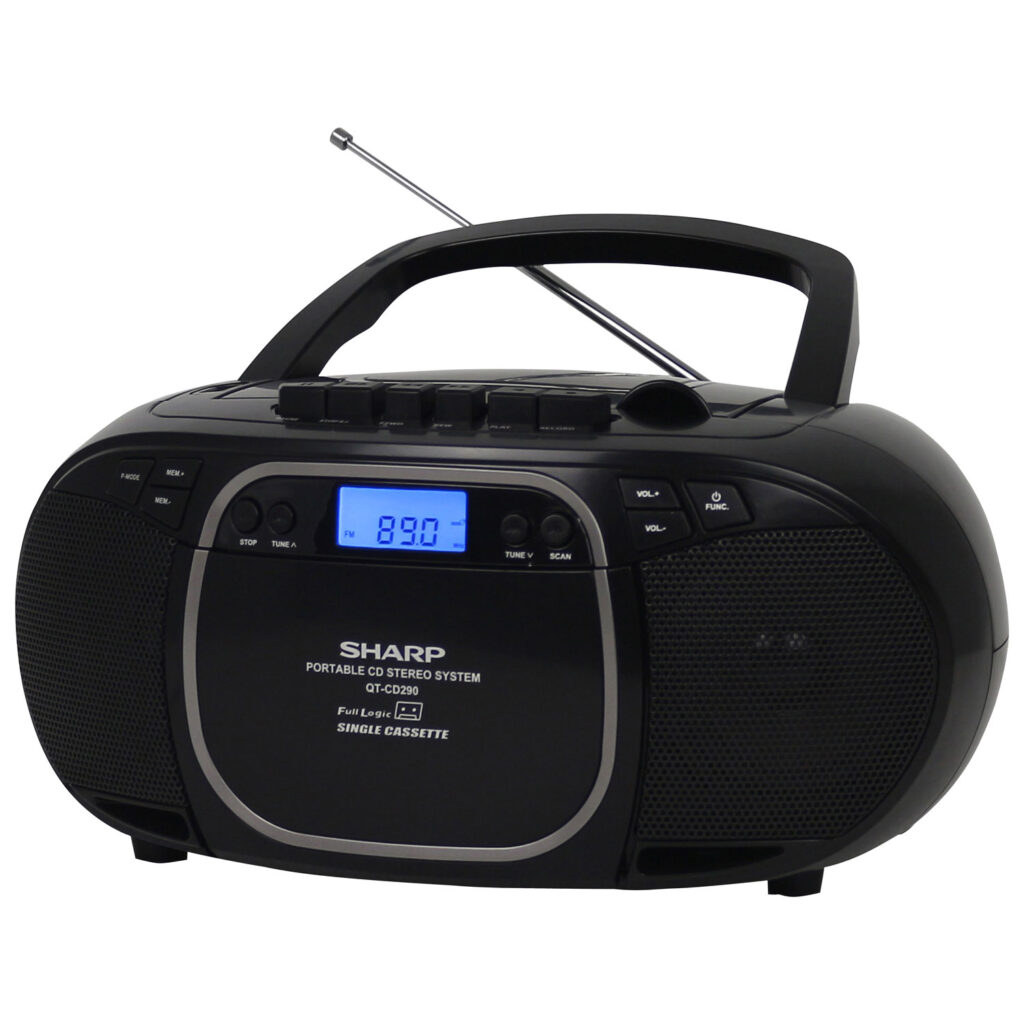
“Chi-Fi” CD Players
Chinese Hi-Fi (or “Chi-Fi”) refers to high fidelity audio equipment designed and manufactured in China, a sector that has grown significantly in recent years. This term often denotes both the products and the enthusiasts surrounding them, particularly in the realms of audiophile culture. Chi-Fi is known for offering impressive sound quality at relatively affordable prices, making it an attractive alternative to traditional Western high-end audio brands. Chinese manufacturers often prioritize innovation, craftsmanship, and competitive pricing, which has garnered a strong following globally. Brands like Topping, SMSL, iBasso, and FiiO are examples of Chi-Fi companies that produce everything from digital-to-analog converters (DACs) and amplifiers to headphones and portable audio devices.
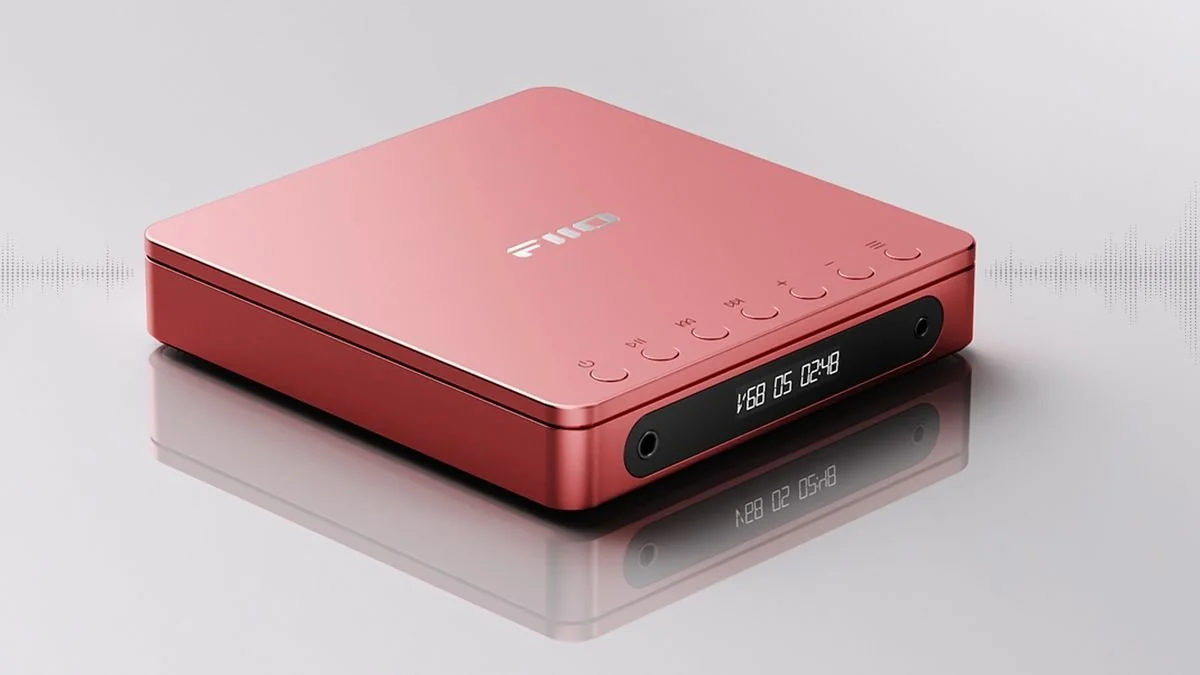
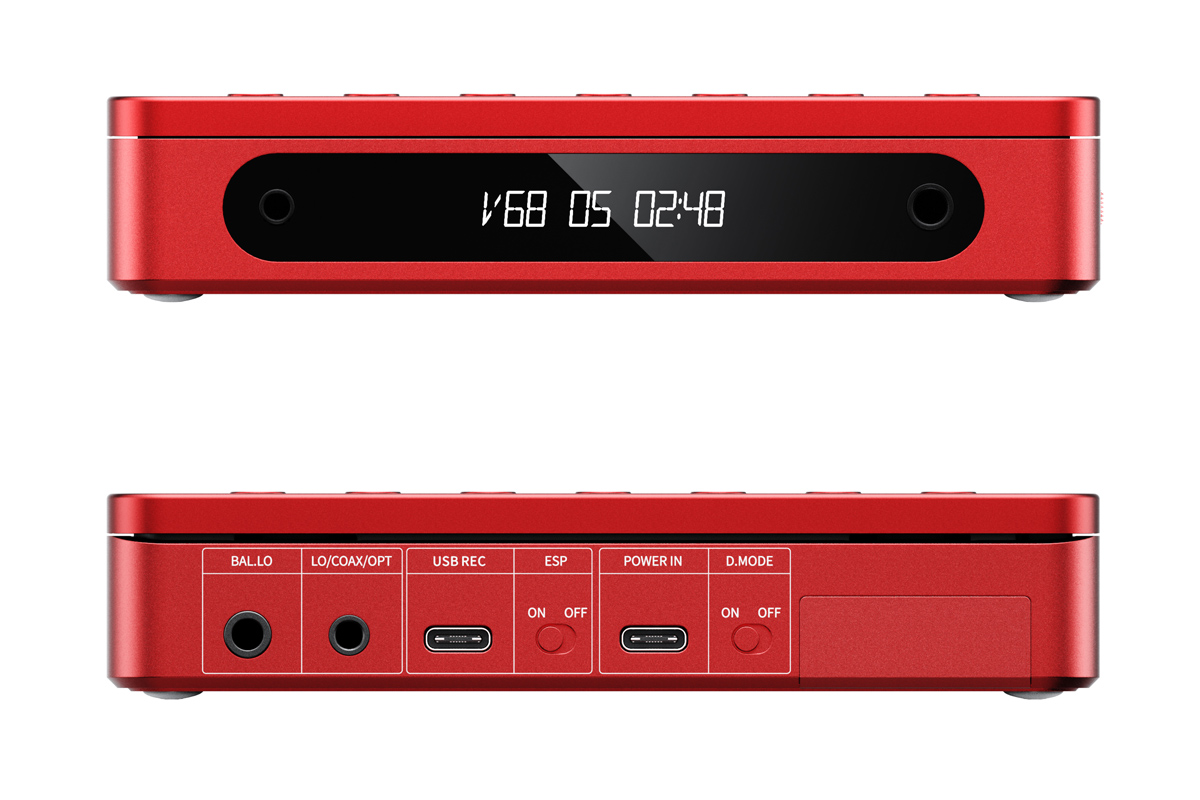
Traditional CD Players
Traditional Hi-Fi manufacturers such as Yamaha, Sony, and Onkyo continue to produce excellent CD players.
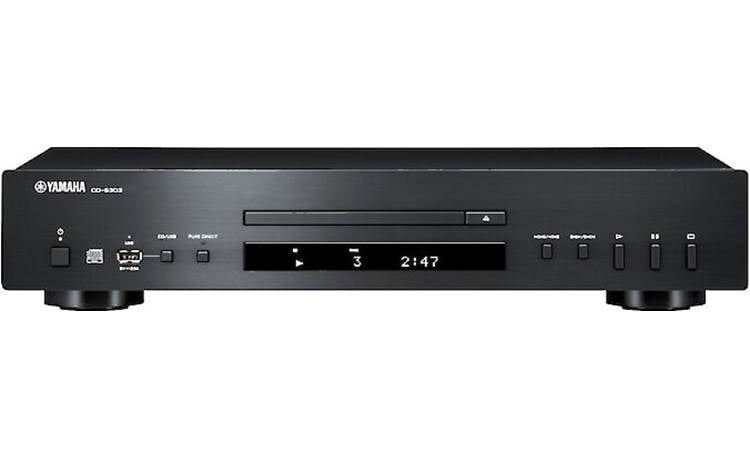
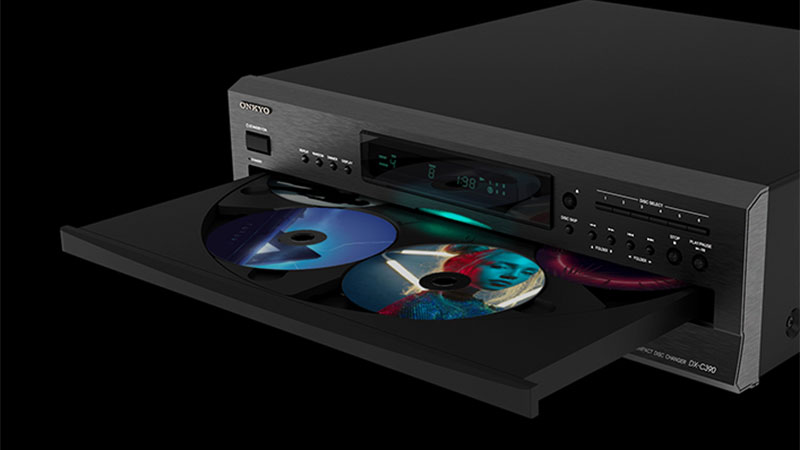
Audiophile CD Players
Audiophile CD players are designed to provide high-fidelity audio reproduction from compact discs, often incorporating advanced digital-to-analog converters (DACs) and robust build quality for audiophile quality sound. Popular brands include Marantz, Cambridge Audio, Audiolab, and Arcam.

Luxury CD Players
There are also CD players aimed at the luxury end of the market, where the manufacturer and the customer will spare no expense to get the best build quality, sound quality, and aesthetic. Some of these brands are Luxman, McIntosh, and Naim.
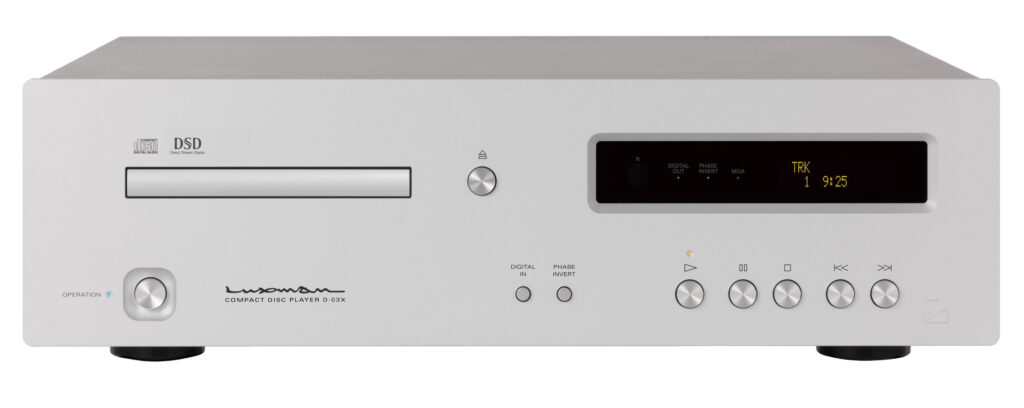
Compact Disc: Induction into the Hi-Fi Hall of Fame
The Compact Disc (CD) stands as a pivotal invention in audio history, undeniably meriting induction into the Hi-Fi Hall of Fame. Its arrival in the early 1980s didn’t just introduce a new format; it revolutionized how the public experienced high-fidelity sound, bridging the gap between the analog past and the digital future of music.
Before the CD, the pursuit of high-fidelity audio was largely the domain of analog formats like vinyl records and cassette tapes, each plagued by inherent limitations such as surface noise, tape hiss, and physical degradation. The CD swept these issues aside, offering a clarity and dynamic range previously unattainable for the average consumer. Its 16-bit, 44.1 kHz digital standard delivered a theoretical 96 dB of dynamic range, virtually eliminating background noise and presenting music with a pristine clarity that captivated listeners.
Beyond raw audio specifications, the CD ushered in an era of unprecedented convenience and durability. Gone were the days of meticulously cleaning records or contending with tangled tapes. CDs offered instant track access, robust error correction, and a level of consistency in playback that analog formats couldn’t match. A CD played today would sound identical tomorrow, a stark contrast to the wear and tear inherent in vinyl. This robust nature, coupled with its compact size, laid the groundwork for portable music players, fundamentally changing music consumption habits.
Furthermore, the CD’s very existence spurred immense innovation across the audio industry. It drove advancements in digital-to-analog converters (DACs), error correction technologies, and the widespread adoption of digital recording and mastering techniques in studios worldwide. The “CD-quality” standard became a benchmark, influencing subsequent digital audio formats and setting the stage for the digital music landscape we know today.
While the audiophile community continues to debate the nuanced sonic merits of digital versus analog, and streaming now dominates the market, the Compact Disc’s impact is undeniable. It democratized high-fidelity sound, making it accessible, consistent, and convenient for millions. For its groundbreaking technological contributions, its profound influence on consumer habits, and its role as the critical stepping stone into the digital age of music, the Compact Disc is a clear and deserving inductee into the Hi-Fi Hall of Fame.
